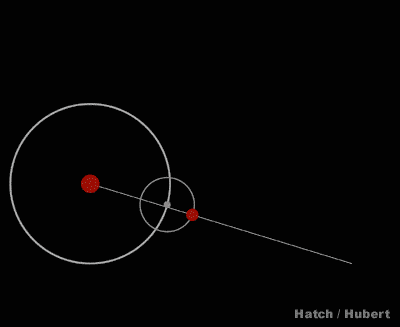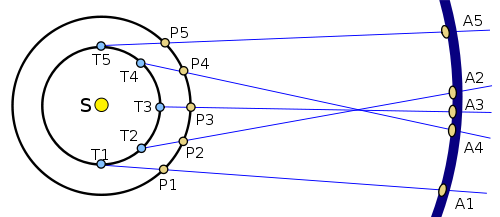What is the geocentric motion of the planets?
1 Answer
See below...
Explanation:
Geocentric Model
Here's a really good illustration of the motion as viewed from a geocentric perspective. The stationary red dot is the Earth. The moving red dot is a planet outside the orbit of Earth about the Sun (ex: say Mars). The white line is the view of the planet looking from Earth. The red line being drawn is the apparent motion of the planet on the sky. The larger white orbit is the orbit of the planet around the Earth. The smaller white orbit is the orbital motion of a planet while it is following its orbit around the Earth.
 Robert A. Hatch
Robert A. Hatch
The geocentric model had to reconcile retrograde motion, which is when an orbiting body appears to stop, go backwards, stop again, and then proceed in normal fashion. For the geocentric model, this meant having an orbiting planet orbit a point on its own orbit as well. So in this case Mars is orbiting the Earth, but it is also orbiting its own orbit about the Earth. Kind of strange, but it was a good attempt and worked at the time to explain the retrograde motion.
Heliocentric Model
Obviously, we know the geocentric model not to be true. We have moved on from this to the standard heliocentric model. And this model also allows for retrograde motion, as shown below:
 Christopher Crockett
Christopher Crockett
In the heliocentric model, the Sun is at the center of the orbits. The blue dots are the Earth and the yellow dots are another planet in an orbit outside that of Earth's about the Sun (ex: say Mars). The Earth orbits the Sun more rapidly than the outer planets because its orbit is smaller. So it basically passes the outer planets which gives the illusion that those planets change direction on the sky.

